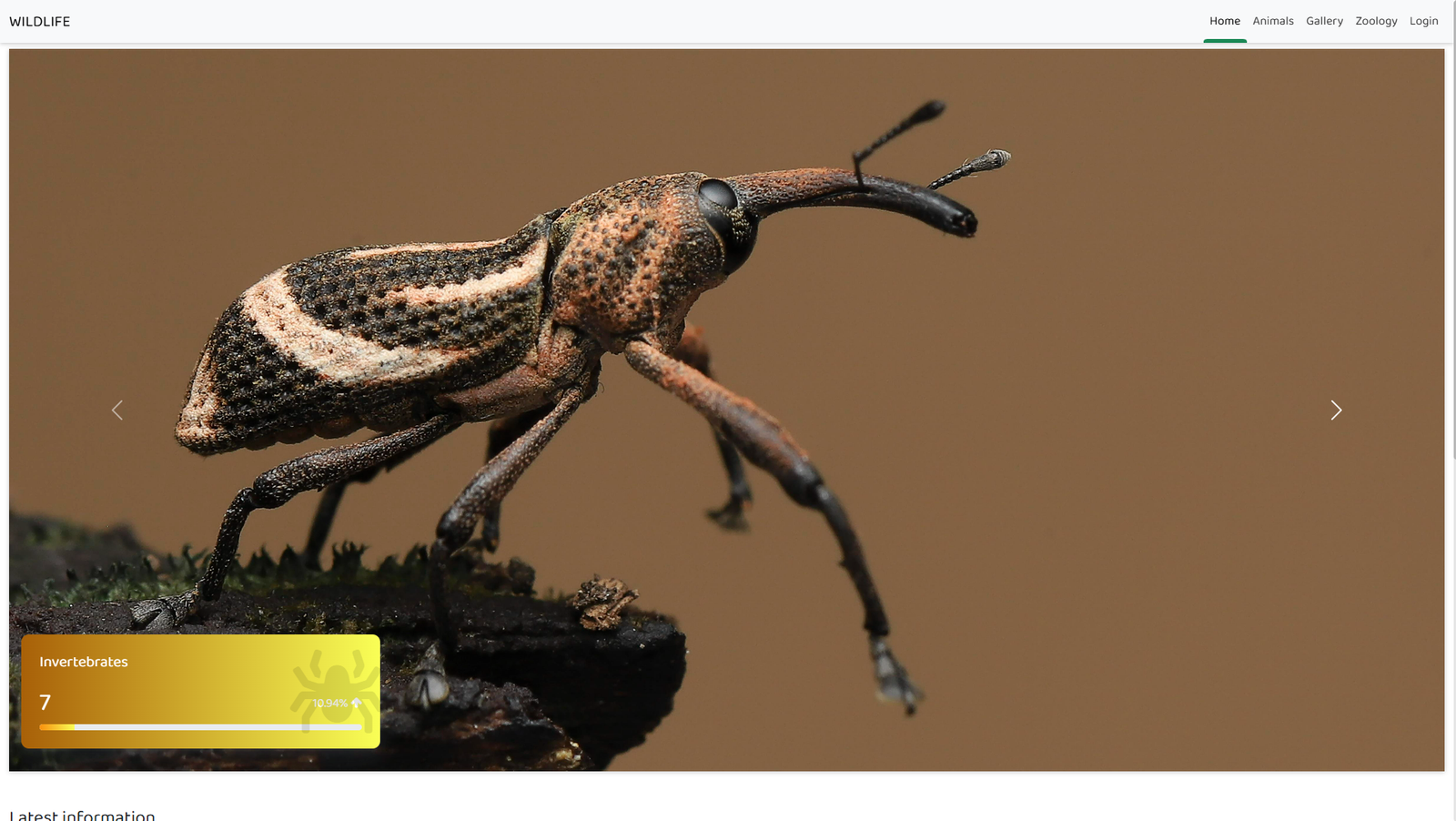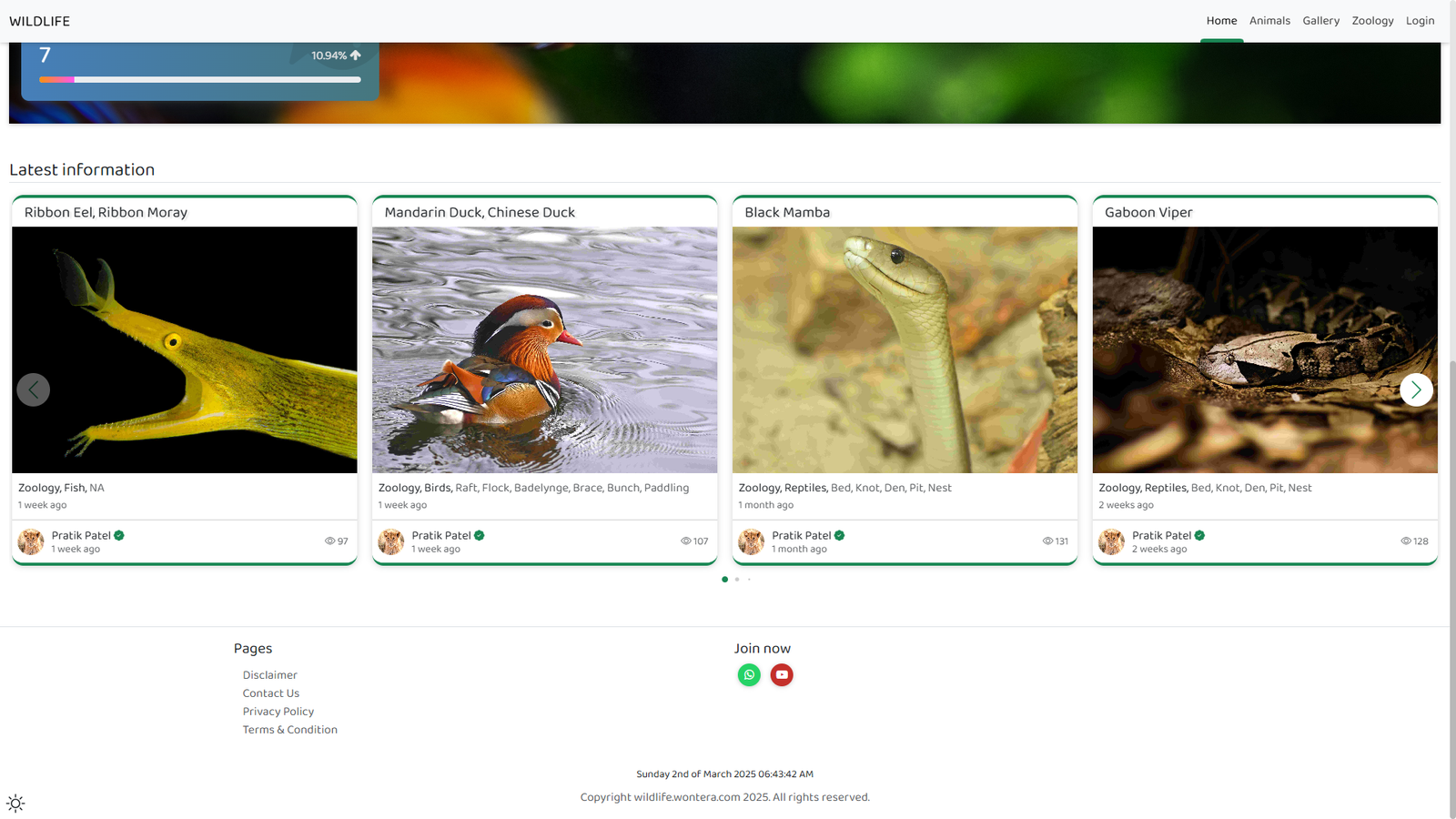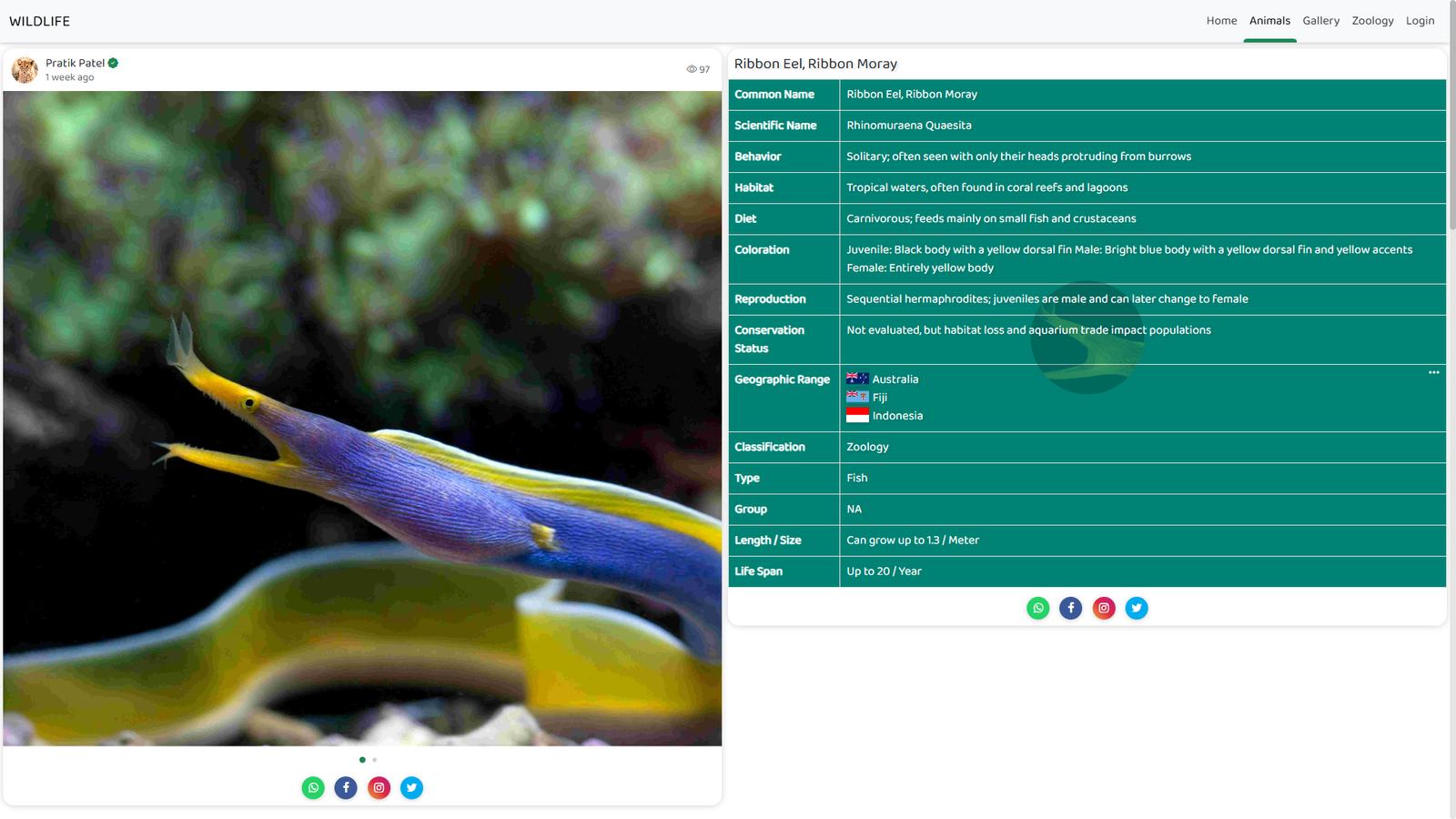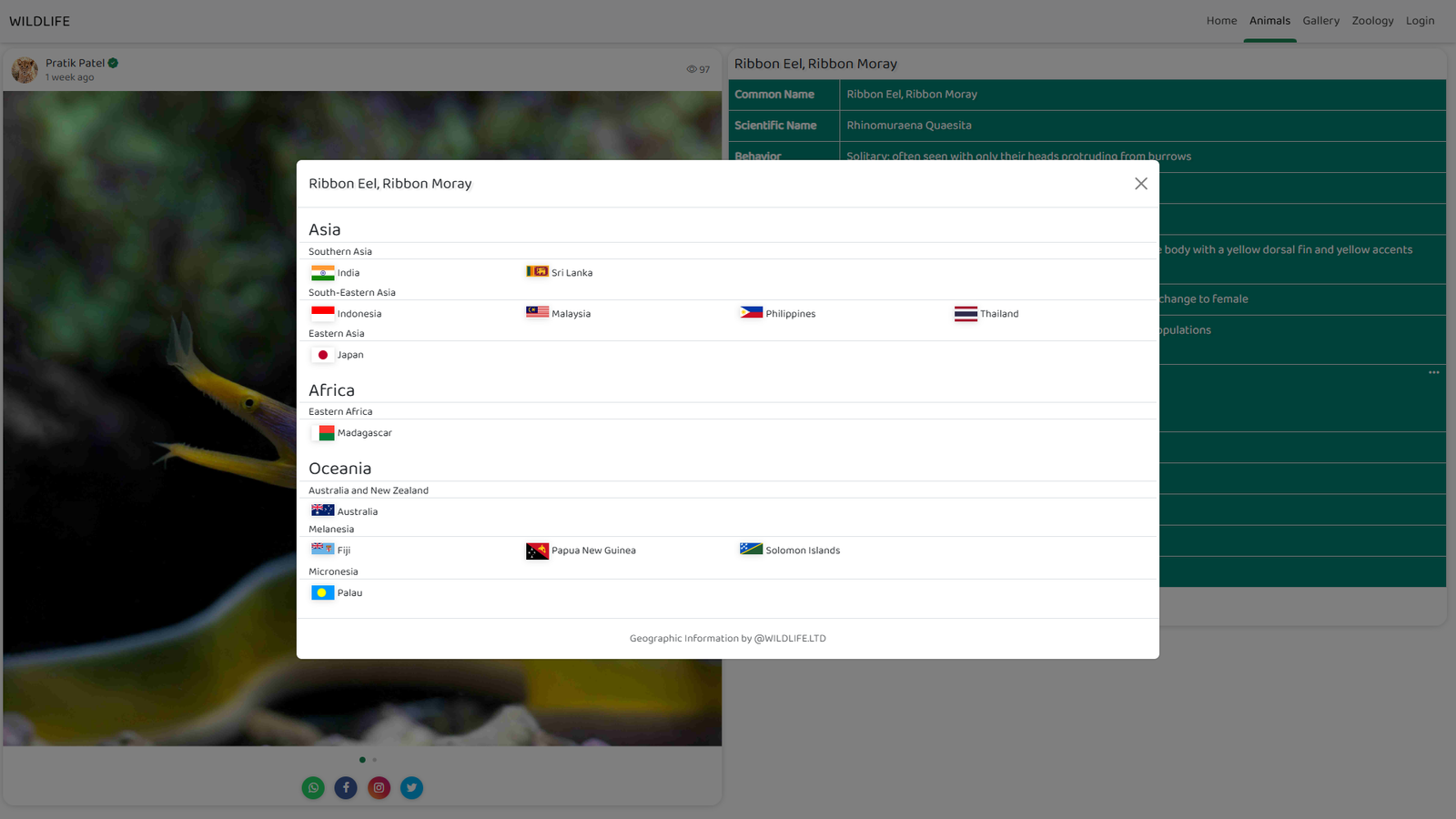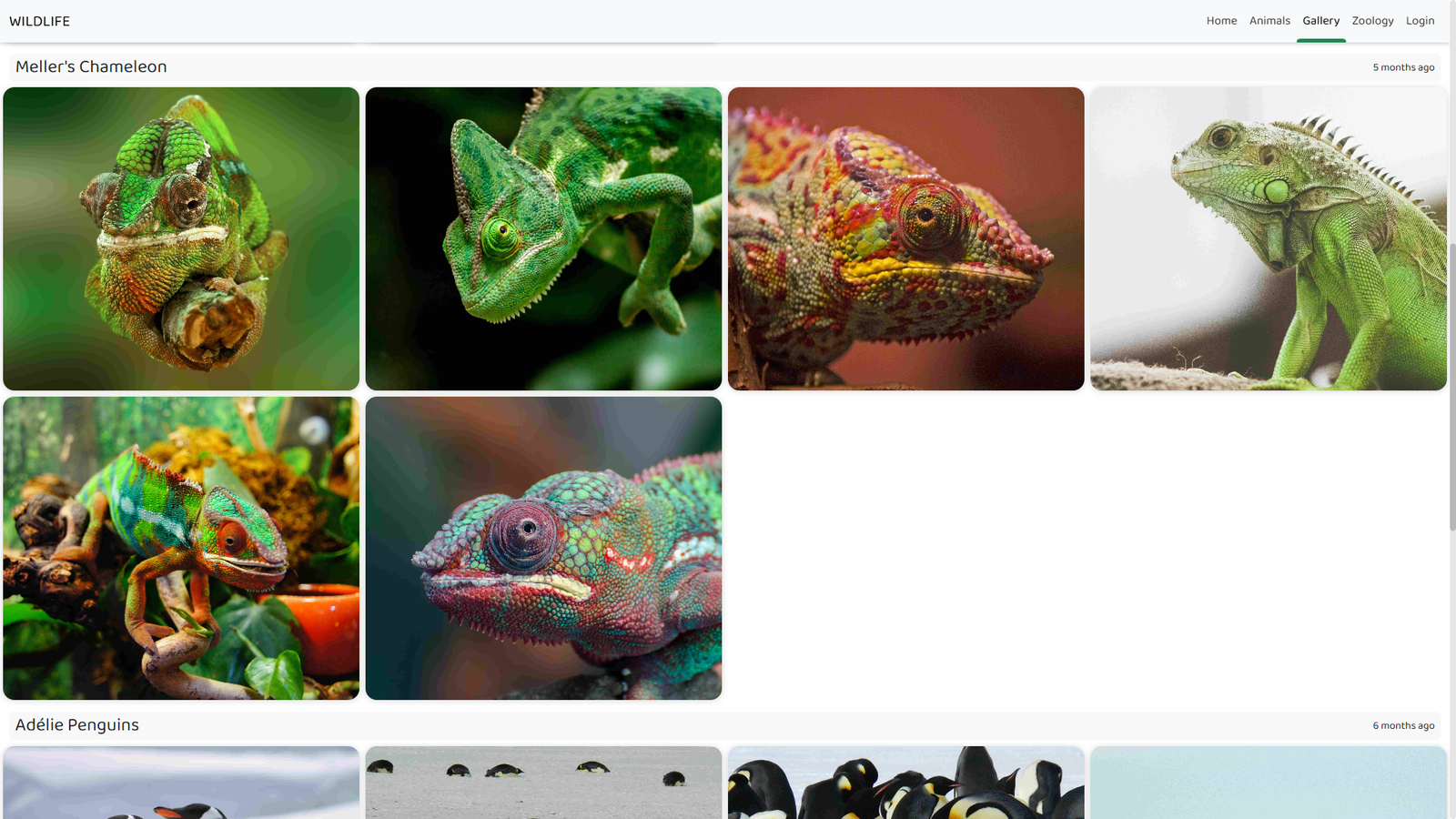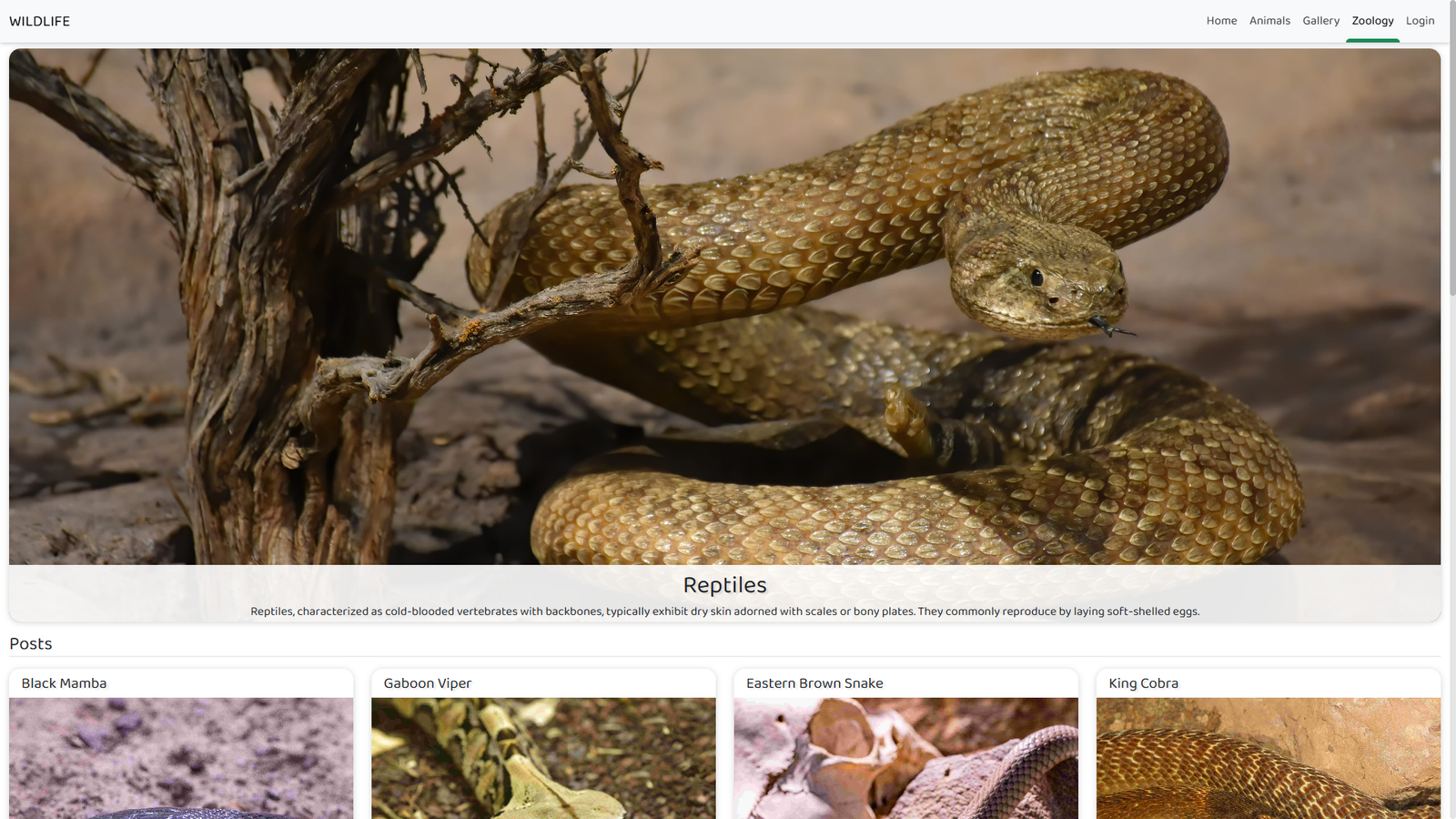Portfolio Details
WILDLIFE - Guide to Animal Diversity Plateform
Here’s a detailed project content for a blog post on wildlife categories:
Title: Understanding Wildlife Categories: A Comprehensive Guide to Animal Diversity
Introduction
Wildlife is a vast and diverse part of our planet’s ecosystem, ranging from majestic mammals to tiny insects, and from the deepest oceans to the highest mountains. Understanding the various categories of wildlife helps us appreciate the complexities of nature and the important roles animals play in maintaining ecological balance. In this blog post, we’ll explore the different categories of wildlife, their habitats, species types, conservation status, and much more.
1. Wildlife by Habitat
Wildlife can be classified based on the environments in which animals live. These habitats include:
- Terrestrial Wildlife: This category includes animals that live primarily on land. Examples include mammals like elephants, lions, and tigers, as well as insects and reptiles.
- Aquatic Wildlife: These are species that thrive in water, whether in freshwater lakes or the deep ocean. Fish, dolphins, and coral reefs are common examples.
- Aerial Wildlife: Birds, bats, and insects that live in the air or spend significant time flying are part of this category. Examples include eagles, owls, and dragonflies.
- Amphibious Wildlife: Amphibians like frogs, salamanders, and crocodiles live both on land and in water. These animals have adapted to survive in both environments.
2. Wildlife by Species Type
The world of wildlife is incredibly diverse, and one way to categorize animals is by their species type. Key groups include:
- Mammals: These warm-blooded animals have hair or fur and, most often, give live birth. Examples include humans, whales, and kangaroos.
- Birds: Feathered, egg-laying creatures, many of which can fly. From sparrows to eagles, birds are vital to ecosystems.
- Reptiles: Cold-blooded vertebrates with scales. Common examples include snakes, lizards, and turtles.
- Amphibians: These animals start their lives in water before transitioning to land. Frogs, newts, and toads are key examples.
- Fish: Aquatic vertebrates that breathe through gills and have fins. Examples include goldfish, sharks, and salmon.
- Invertebrates: These creatures lack a backbone and are incredibly diverse, from insects like butterflies to marine creatures like octopuses.
3. Wildlife by Conservation Status
Many species around the world face the threat of extinction due to habitat loss, poaching, and climate change. Wildlife can be categorized by their conservation status:
- Endangered Species: These species are at high risk of extinction in the near future. Examples include the Amur leopard and the Javan rhino.
- Vulnerable Species: Species that are at risk of becoming endangered. Examples include polar bears and orangutans.
- Critically Endangered Species: These species face a very high risk of extinction in the wild. For example, the Vaquita and the Sumatran tiger are critically endangered.
- Least Concern: Species that are not currently at risk of extinction and have stable populations, such as raccoons and deer.
4. Wildlife by Ecological Role
Wildlife also plays different roles in ecosystems, and these roles can help classify species:
- Carnivores: These animals primarily eat other animals. Examples include lions, wolves, and hawks.
- Herbivores: Herbivores rely on plants for food. Common examples include giraffes, cows, and zebras.
- Omnivores: These species eat both plants and animals. Examples include bears, pigs, and humans.
- Decomposers: These organisms break down dead plants and animals, recycling nutrients into the environment. Examples include fungi, earthworms, and vultures.
5. Wildlife by Geographical Region
Geography plays an important role in shaping wildlife species. Different regions of the world are home to unique species:
- African Wildlife: Africa is home to iconic species like elephants, lions, and giraffes. Its diverse habitats include savannas, deserts, and rainforests.
- Asian Wildlife: Asia hosts species like the Bengal tiger, giant panda, and snow leopard, found in forests, mountains, and grasslands.
- North American Wildlife: North America is known for species like bison, bald eagles, and black bears, found across forests, plains, and mountains.
- South American Wildlife: The Amazon Rainforest is teeming with wildlife, including jaguars, sloths, and capybaras.
- Australian Wildlife: Australia is famous for its unique species like kangaroos, koalas, and platypuses, which have adapted to its distinct ecosystems.
6. Wildlife by Size
Animals can also be categorized by size, which often influences their ecological role and behavior:
- Large Mammals: Big animals like elephants, whales, and rhinos are considered large mammals. These species have significant impacts on their ecosystems.
- Medium-Sized Mammals: Wolves, deer, and foxes fall into this category. They play crucial roles as predators and prey in their habitats.
- Small Mammals: Small mammals such as squirrels, rabbits, and mice are important for their roles in food webs and as prey for larger animals.
7. Wildlife by Migration Pattern
Migration is another important factor in categorizing wildlife:
- Migratory Wildlife: Species that travel long distances in response to seasonal changes. Examples include monarch butterflies, salmon, and Arctic terns.
- Non-Migratory Wildlife: These animals remain in the same region year-round. Examples include lions, pandas, and raccoons.
Conclusion
The incredible diversity of wildlife across our planet is a testament to the complexity of ecosystems. Whether by habitat, species type, conservation status, ecological role, or migration pattern, wildlife plays a crucial role in the balance of nature. As we continue to face global challenges like climate change and habitat loss, it’s important to understand and protect the many categories of wildlife that share our world.
Call to Action
If you’re passionate about wildlife conservation and want to make a difference, consider supporting conservation efforts, reducing your ecological footprint, or learning more about the species in your local environment. Together, we can help protect the incredible diversity of life on Earth!
Let me know if you'd like any changes or additions to this blog post!
WONTERA IT SERVICE AND FREELANCER – Services & Offerings
1. IT Services & Solutions
- Custom software development
- Cloud computing & hosting solutions
- IT consulting & support
2. Web & App Development
- Website design & development
- E-commerce solutions
- Mobile app development (Android & iOS)
3. Digital Marketing & SEO
- Search engine optimization (SEO)
- Social media marketing (SMM)
- Pay-per-click (PPC) advertising
4. Graphic & UI/UX Design
- Logo & brand identity design
- UI/UX design for websites & apps
- Motion graphics & animation
5. Tech Support & Maintenance
- IT troubleshooting & support
- Software updates & security patches
- Server & database management
6. Freelance IT Services
- On-demand project-based work
- Custom solutions for startups & businesses
- Cost-effective & scalable tech solutions
- Terrestrial Wildlife
- Aquatic Wildlife
- Aerial Wildlife
- Amphibious Wildlife
- PHP
- Laravel
- MySQL
- Bootstrap 5
Transform Your Business with Cutting-Edge IT Solutions
Empower your organization with innovative IT solutions tailored to your needs. From cloud computing to software development, we deliver excellence to help you succeed in a digital world.
Get Started Now
